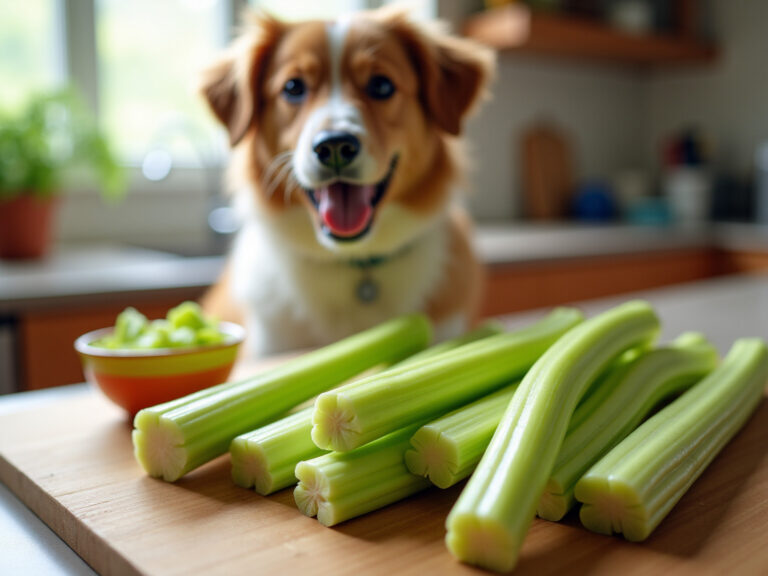Understand the Dog Poop Color Chart for Your Pet’s Health
Overview
The dog poop color chart serves as a vital resource for monitoring your furry family members’ health. Understanding that different stool colors can signal specific health issues—from digestive troubles to more serious internal conditions—can be quite concerning for pet owners.
Typically, healthy stool appears chocolate brown, while colors like black, red, and gray may indicate potential health concerns. It’s crucial to consult a veterinarian if unusual colors persist or are accompanied by other symptoms.
By staying informed, you can ensure a nurturing environment for your beloved pets.
Introduction
Understanding the nuances of your furry family member’s health can often hinge on a simple yet revealing observation: the color of their stool. The dog poop color chart serves as a vital tool for pet owners, offering insights into potential health issues based on the various hues of feces. While a healthy dog typically produces rich chocolate brown droppings, deviations in color could signal underlying problems that require immediate attention. What do these colors truly mean, and how can they guide you in providing a nurturing environment for your beloved pet?
Understand the Dog Poop Color Chart
Understanding your dog’s health can be as simple as using a dog poop color chart to observe the color of their stool. The dog poop color chart categorizes stool hues into various shades, each indicating different wellness conditions. Ideally, a healthy dog’s feces should be a rich chocolate brown, which indicates proper digestion and a balanced diet. However, other colors can point to specific health issues that deserve your attention:
- Black: This may suggest digested blood, indicating potential internal bleeding.
- Red: Fresh blood in the stool can signal bleeding in the lower gastrointestinal tract.
- Green: Often a sign of consuming grass, or it could suggest a gastrointestinal issue.
- Yellow: This may indicate liver or pancreatic issues.
- Orange: Can suggest problems with the liver or gallbladder.
- Gray: Indicates possible fat malabsorption, often linked to pancreatic issues.
By familiarizing yourself with these hues from the dog poop color chart, you can more effectively observe your furry family member’s well-being. This awareness allows you to take suitable measures when needed, ensuring a nurturing environment for your beloved pet.

Interpret the Meaning of Poop Colors
The dog poop color chart can help reveal important insights about your dog’s health based on the color of their poop. Understanding these signs can empower you as a pet owner to monitor your furry family member’s well-being more effectively.
- Chocolate Brown: A healthy digestive system is indicated by this hue, thanks to the presence of bile that aids in digestion.
- Black: This color often signals internal bleeding, particularly in the upper gastrointestinal tract. If you notice black stool, please consult a veterinarian immediately for your pet’s safety.
- Red: Fresh blood may suggest bleeding in the lower GI tract, which could stem from infections, parasites, or other serious conditions. It’s essential to seek veterinary advice if you observe this.
- Green: This may indicate that your dog has been indulging in grass or could suggest a gastrointestinal upset that needs attention.
- Yellow: Yellow feces can hint at liver or pancreatic issues, and it might also mean that food is moving too quickly through the digestive system.
- Orange: This color can signify liver or gallbladder problems and may also suggest rapid food transit through the intestines.
- Gray: If you notice gray or greasy poop, it could indicate issues with fat digestion, often linked to pancreatic concerns.
By monitoring these colors with a dog poop color chart, you can better understand your dog’s health and ensure they receive the care they need. Remember, your pet’s health is a priority, and being proactive can make all the difference.

Take Action Based on Color Observations
When you notice unusual colors in your dog’s poop, it’s important to take a few thoughtful steps to ensure your furry family member’s well-being:
- Monitor: Keep a close watch on your dog’s stool for a few days. If the color returns to normal, it might have just been a temporary issue.
- Diet Review: Reflect on any recent changes in your dog’s diet. New foods can sometimes lead to temporary changes in stool color, as illustrated by a dog poop color chart.
- Hydration Check: Make sure your dog is drinking enough water, as dehydration can affect stool consistency and appearance.
- Consult a Veterinarian: If you continue to see unusual shades on the dog poop color chart, particularly black, red, or gray, reach out to your veterinarian right away. These colors can indicate serious medical concerns that require prompt attention.
- Record Keeping: Keep a log of your dog’s poop colors using a dog poop color chart and any other symptoms. This information can be crucial for your veterinarian in diagnosing potential health issues.
By taking these caring actions, you can address any wellness concerns early and help maintain your dog’s health and happiness.

Know When to Consult a Veterinarian
As a devoted pet owner, it’s essential to be aware of your furry family members’ health. If you notice any of the following signs, it’s important to consult a veterinarian:
- Persistent Abnormal Colors: Should your dog’s poop exhibit an unusual color for more than 24 to 48 hours, seeking professional advice is crucial.
- Accompanying Symptoms: If your dog displays signs of distress—like vomiting, lethargy, loss of appetite, or diarrhea—don’t hesitate to consult your vet immediately.
- Blood in Stool: The presence of blood, whether fresh red or dark and tarry, warrants an immediate veterinary visit.
- Changes in Behavior: A shift in your dog’s behavior, such as increased lethargy or decreased playfulness, could indicate an underlying medical concern.
- Dietary Concerns: If you suspect that your dog’s diet may be causing issues, a veterinarian can help you determine the best course of action.
Being proactive and knowing when to seek help can make a significant difference in your dog’s health outcomes. Remember, your caring attention is a vital part of their well-being.

Conclusion
Understanding your dog’s health is paramount, and utilizing a dog poop color chart can significantly enhance this process. This simple yet effective tool empowers pet owners to monitor their furry family members’ well-being by observing stool color. A healthy dog typically has rich chocolate brown feces, a sign of proper digestion and nutrition. Any deviations from this color can signal underlying health issues that deserve attention.
Throughout this discussion, we’ve explored key insights into the meanings behind various stool colors. For instance, black or red feces can indicate serious conditions such as internal bleeding, while colors like yellow, orange, and gray may hint at liver or pancreatic problems. By familiarizing yourself with these indicators and taking appropriate actions—such as monitoring, reviewing diet, and consulting a veterinarian when necessary—you can ensure your beloved pet receives timely care and intervention.
Ultimately, proactive monitoring of your dog’s stool color is crucial for maintaining their health. By understanding the significance of the dog poop color chart, you can take informed actions to safeguard your furry friend’s well-being. Regularly observing and responding to changes in stool color not only promotes a healthier pet but also strengthens the bond of care and responsibility between you and your dog.
Frequently Asked Questions
What is the purpose of the dog poop color chart?
The dog poop color chart helps pet owners understand their dog’s health by categorizing stool colors, each indicating different wellness conditions.
What is the ideal color of a healthy dog’s feces?
A healthy dog’s feces should be a rich chocolate brown, indicating proper digestion and a balanced diet.
What does black stool indicate in dogs?
Black stool may suggest digested blood, indicating potential internal bleeding.
What does red stool in dogs signify?
Red stool can signal fresh blood in the stool, which may indicate bleeding in the lower gastrointestinal tract.
What does green stool suggest about a dog’s health?
Green stool often indicates that a dog has consumed grass or could suggest a gastrointestinal issue.
What health issues can yellow stool indicate in dogs?
Yellow stool may indicate liver or pancreatic issues.
What does orange stool mean for a dog’s health?
Orange stool can suggest problems with the liver or gallbladder.
What does gray stool indicate in dogs?
Gray stool indicates possible fat malabsorption, often linked to pancreatic issues.
How can observing stool color benefit pet owners?
Familiarizing oneself with the dog poop color chart allows pet owners to effectively monitor their dog’s well-being and take suitable measures when health issues arise.







